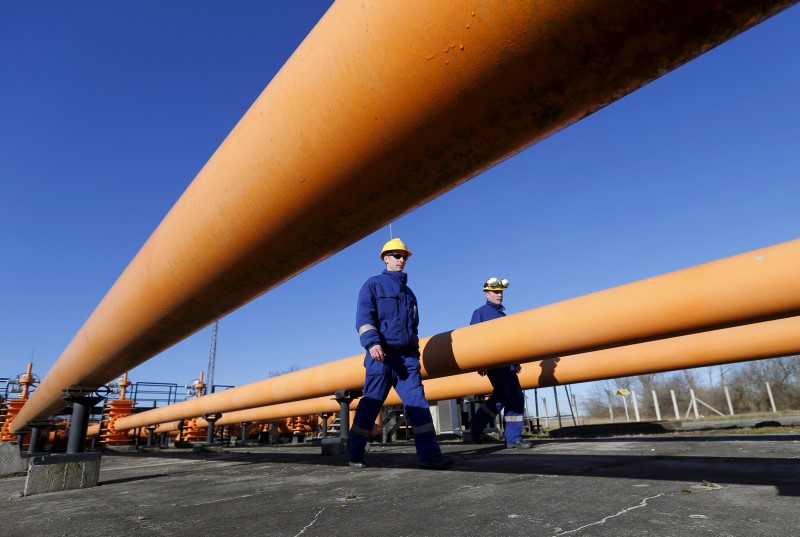--Clyde Russell is a Reuters columnist. The views expressed are his own.--
By Clyde Russell
LAUNCESTON, Australia, July 30 (Reuters) - What could go wrong for liquefied natural gas (LNG) in Asia to derail the current consensus of strongly rising demand being met by supply that is increasing even faster?
One of the assumptions that often remains unspoken when analysing energy markets is the status of the infrastructure needed to ensure products can actually get from one place to another, and then be processed at their destination.
For LNG, there is little doubt about the wave of supply coming onstream in the next few years, with the seven projects in Australia under construction or in the process of starting up largely meeting the timetables set by their operators.
It's much the same with the five projects under construction in the United States, which together with the Australian export terminals will add more than 110 million tonnes of annual capacity to the market within the next four years.
Other projects being built in Russia, Indonesia, Malaysia and Africa will take the total LNG output capacity to 423.7 million tonnes by 2020, up from 301.2 million tonnes last year, according to data from the International Gas Union (IGU).
The supply additions are already starting to overwhelm demand, causing prices to decline sharply. Spot Asian LNG LNG-AS fetched $8.10 per million British thermal units (mmBtu) in the week to July 24, down 20 percent since the start of the year and 60 percent from the record $20.50 hit in February 2014.
The market consensus is that the growth in supply will outweigh the increase in demand over the next few years, notwithstanding the expectations of strong growth in consuming nations in Asia, particularly China and India.
LNG demand in Asia will grow by more than 40 percent to almost 230 million tonnes per annum, according to a research report from Australia's ANZ Bank published on July 23.
This robust growth will be driven by China and India and will be achieved despite the prospect of ongoing low prices for competing fuels such as coal for power generation and oil for transportation, the report said.
LNG demand will be boosted by its status as a cleaner-burning fuel, especially in China, where authorities want to lower pollution while maintaining high economic growth rates.
The big picture painted by ANZ and several other analysts is that LNG has a solid long-term outlook even though supply will rise faster than demand in the medium-term.
This isn't an unreasonable expectation, but the question remains as to whether China and India will be able to physically import the LNG that they are expected to need.
NOT ENOUGH CHINA REGAS BEING BUILT
China currently has 38.5 million tonnes of LNG regasification capacity, and a further 40.9 million either under construction or approved, according data compiled by Reuters. ID:nL3N0Y92AB
Data from the IGU says China currently has 25.2 million tonnes of regasification under construction, with all of this expected to be completed by 2018.
If all the approved capacity is also built by 2020, it would take China's total import capacity to just under 80 million tonnes per annum.
While it would be theoretically possible to come close to utilising all that capacity, history suggests this is unlikely.
The IGU said that global regasification terminal utilisation was about 33 percent in 2014. Excluding import facilities in the United States, which are effectively mothballed since the rise of shale gas output, and the total capacity utilisation rises to 41 percent.
China's capacity utilisation was 51 percent in 2014, down from 59 percent in 2013, according to the IGU.
Top LNG importer Japan, which has a regas capacity of 190 million tonnes, had a utilisation rate of 47 percent last year.
If one assumes China can utilise even 60 percent of its LNG regasification capacity, and that capacity reaches 80 million tonnes per annum by 2020, it means imports could reach 48 million tonnes by then.
Imports in the first six months of 2015 were 9.5 million tonnes, down 3.9 percent over the same period a year earlier, and putting China on track for total imports this year of around 20 million tonnes.
Even if this figure does more than double to 48 million tonnes, it still means China will only be able to absorb about 23 percent of the global liquefaction capacity additions coming online between now and 2020.
India has 13.6 million tonnes of regasification capacity under construction, according to the IGU, which would take its total capacity to about 35 million tonnes.
This implies India could raise its LNG imports from 2014's 14.2 million tonnes, but a realistic target for 2020 would be around 20 million tonnes.
Overall, the IGU details regasification projects under construction globally and planned for completion by 2018 that total 78.7 million tonnes.
That compares unfavourably with the 122.5 million tonne increase in LNG liquefaction capacity that is under contraction already and will be online by 2020.
Even allowing that more terminals may be completed between 2018 and 2020, it seems unlikely enough regasification capacity is being built to meet expected supply increases, particularly in China and India, the two big hopes for demand growth.
(Editing by Tom Hogue)
